Microservice Architecture
One of the most well-known patterns for distributed transactions is called Saga.
A saga is a sequence of local transactions where each transaction updates data within a single service. The first transaction is initiated by an external request corresponding to the system operation, and then each subsequent step is triggered by the completion of the previous one.
There are a couple of different ways to implement a saga transaction, but the two most popular are:
- Events/Choreography: When there is no central coordination, each service produces and listen to other service’s events and decides if an action should be taken or not.
- Command/Orchestration: when a coordinator service is responsible for centralizing the saga’s decision making and sequencing business logic.
We prefer Command/Orchestration method
In the orchestration approach, we define a new service (BFF / Backend For Frontend) with the sole responsibility of telling each participant what to do and when. The saga orchestrator communicates with each service in a command/reply style telling them what operation should be performed.
Let’s see how it looks like using e-commerce example:
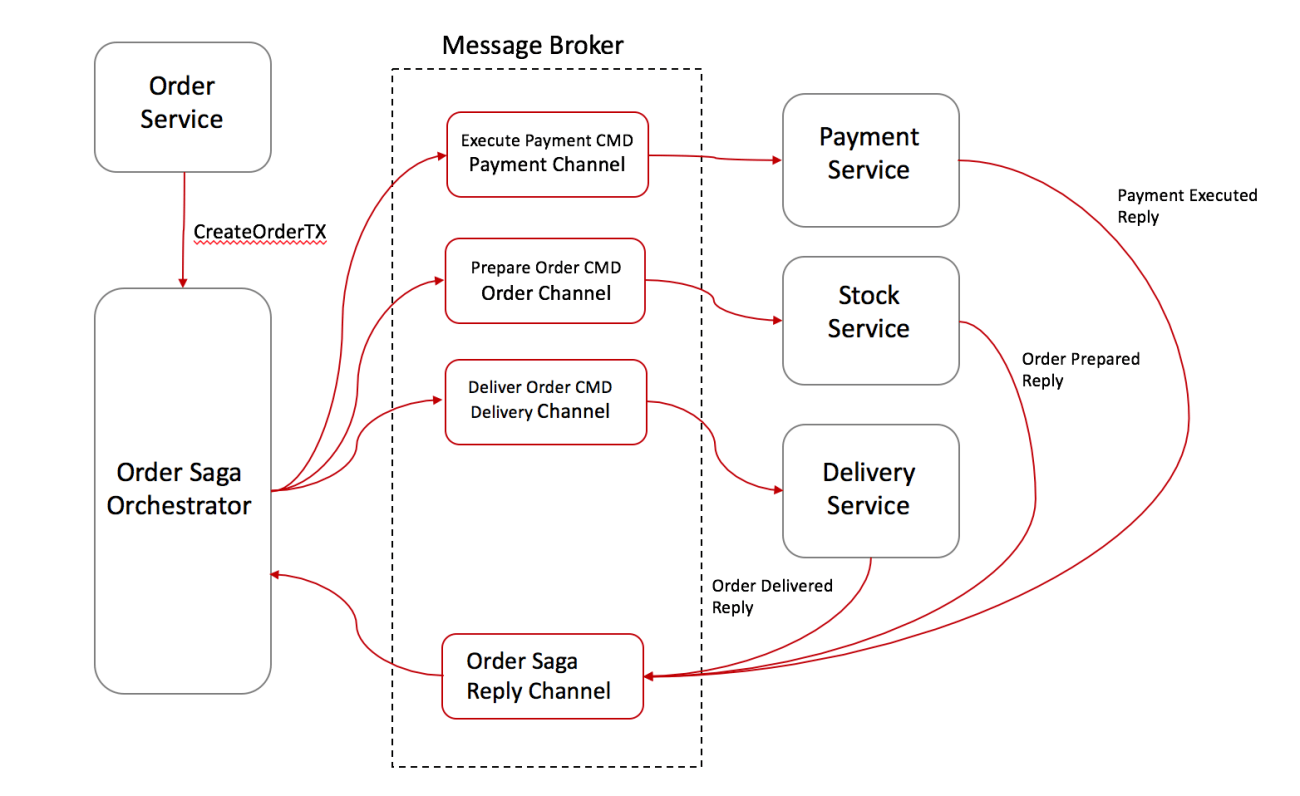
- Order Service saves a pending order and asks Order Saga Orchestrator (OSO) to start a create order transaction.
- OSO sends an Execute Payment command to Payment Service, and it replies with a Payment Executed message
- OSO sends a Prepare Order command to Stock Service, and it replies with an Order Prepared message
- OSO sends a Deliver Order command to Delivery Service, and it replies with an Order Delivered message
In the case above, Order Saga Orchestrator knows what is the flow needed to execute a “create order” transaction. If anything fails, it is also responsible for coordinating the rollback by sending commands to each participant to undo the previous operation.
A standard way to model a saga orchestrator is a State Machine where each transformation corresponds to a command or message. State machines are an excellent pattern to structure a well-defined behavior as they are easy to implement and particularly great for testing.
Rolling back in Saga’s Command/Orchestration
Rollbacks are a lot easier when you have an orchestrator to coordinate everything:
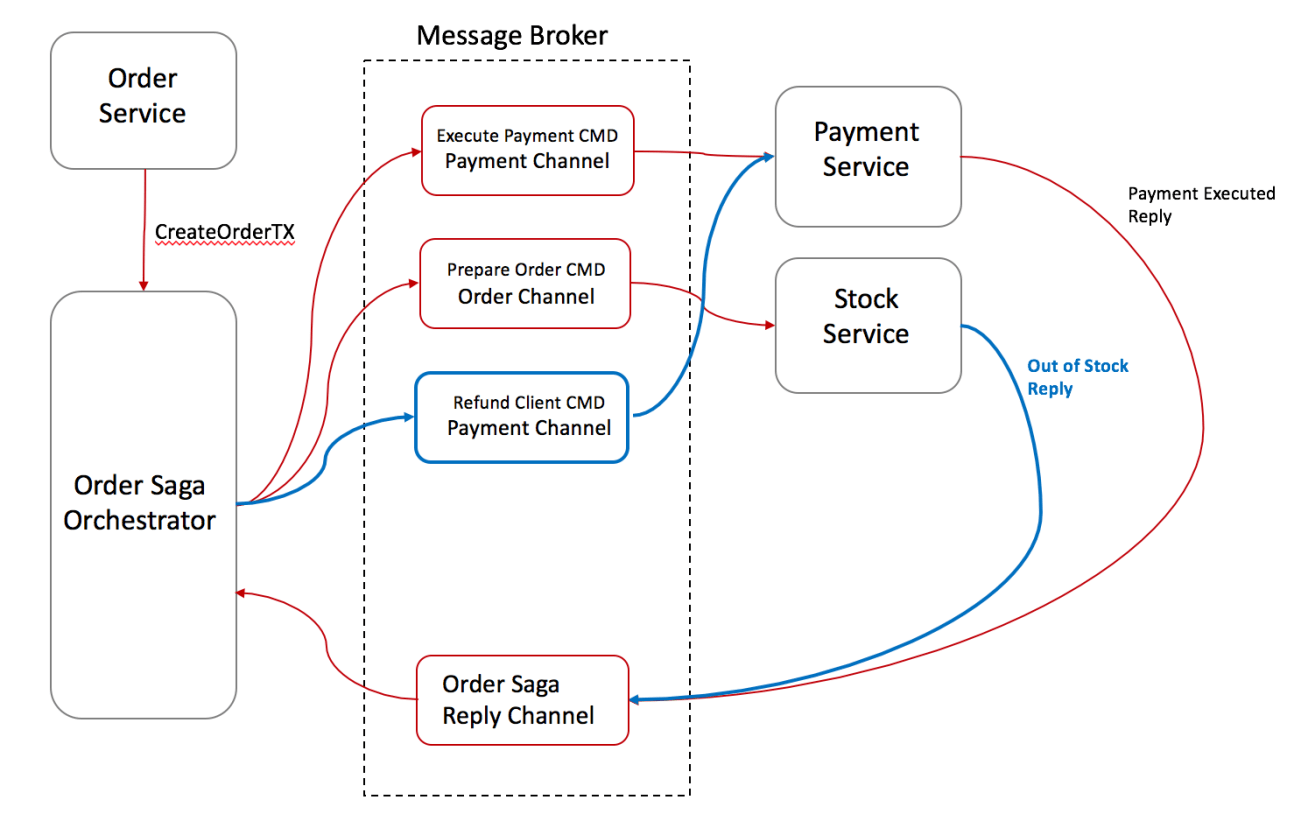
- Stock Service replies to OSO with an Out-Of-Stock message;
- OSO recognizes that the transaction has failed and starts the rollback. In this case, only a single operation was executed successfully before the failure, so OSO sends a Refund Client command to Payment Service and set the order state as failed
Special thanks to Denis Rosa
Net Core Genesis Microservices Solution Structure
| Overall | Expanded |
|---|---|
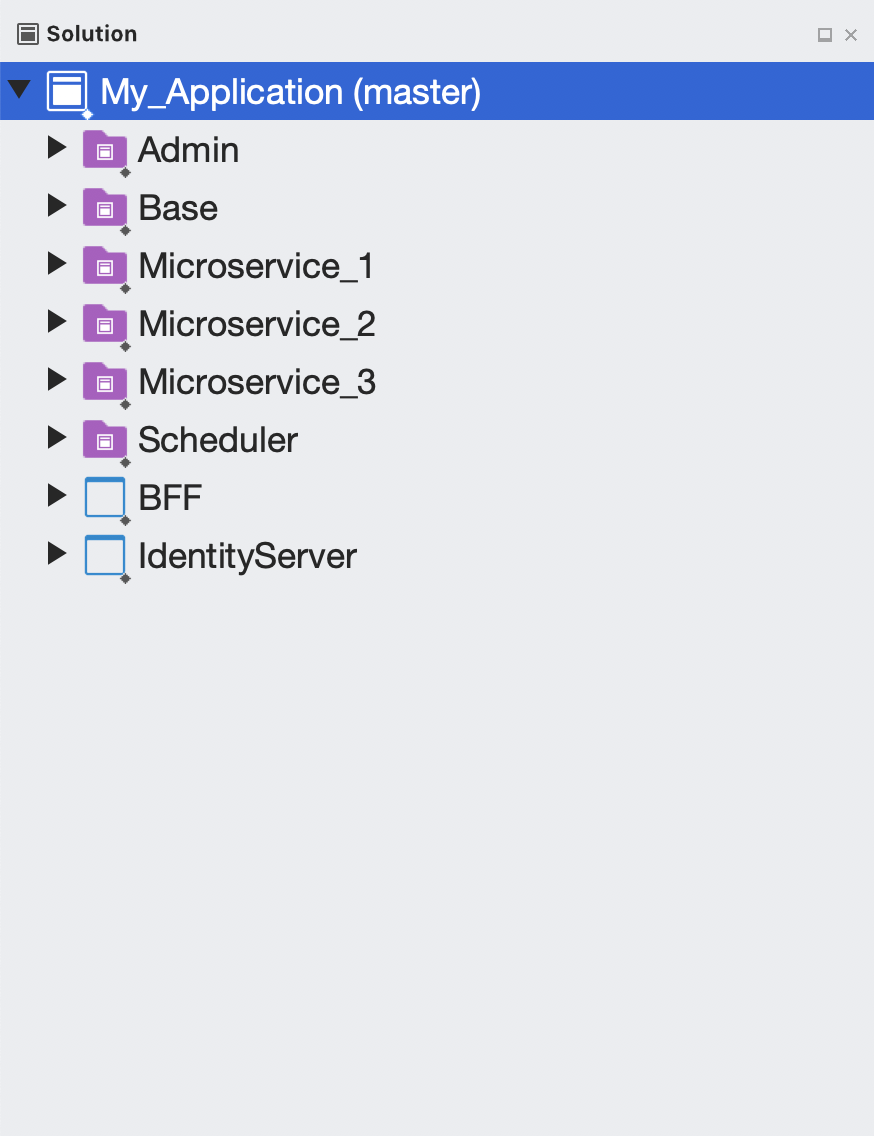 | 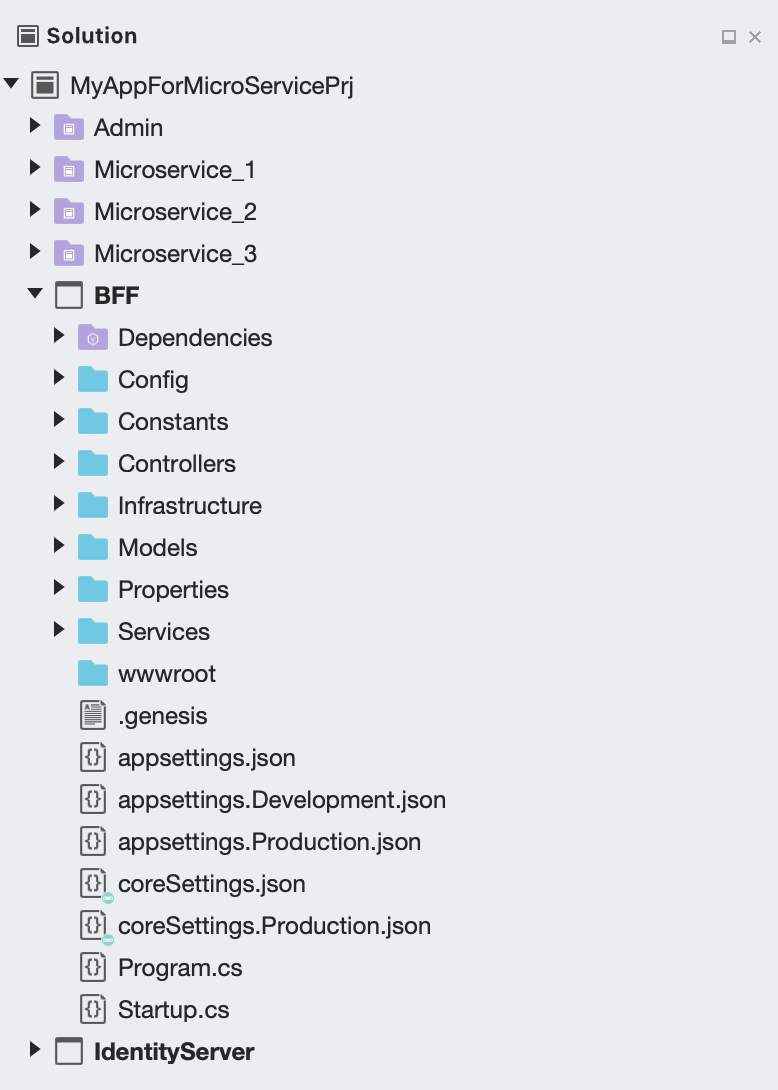 |
| API | Data |
|---|---|
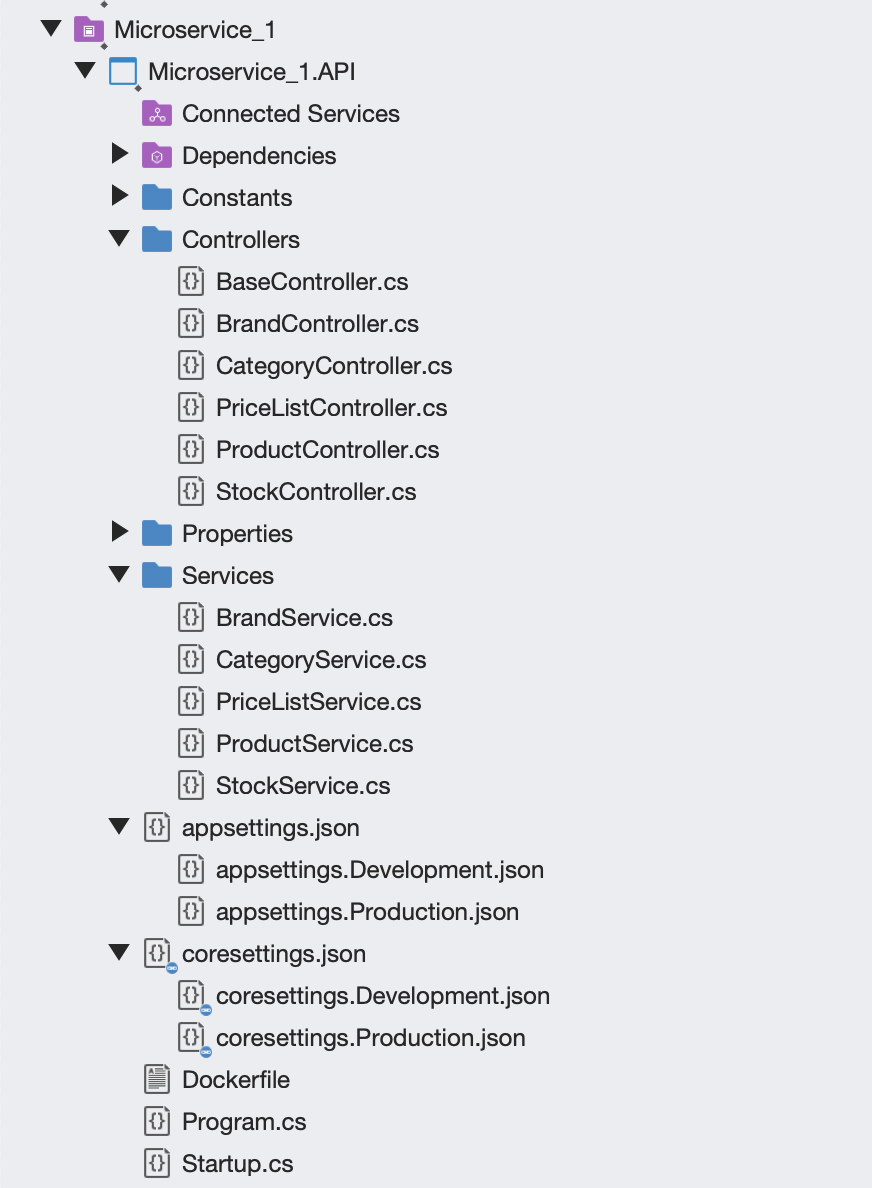 | 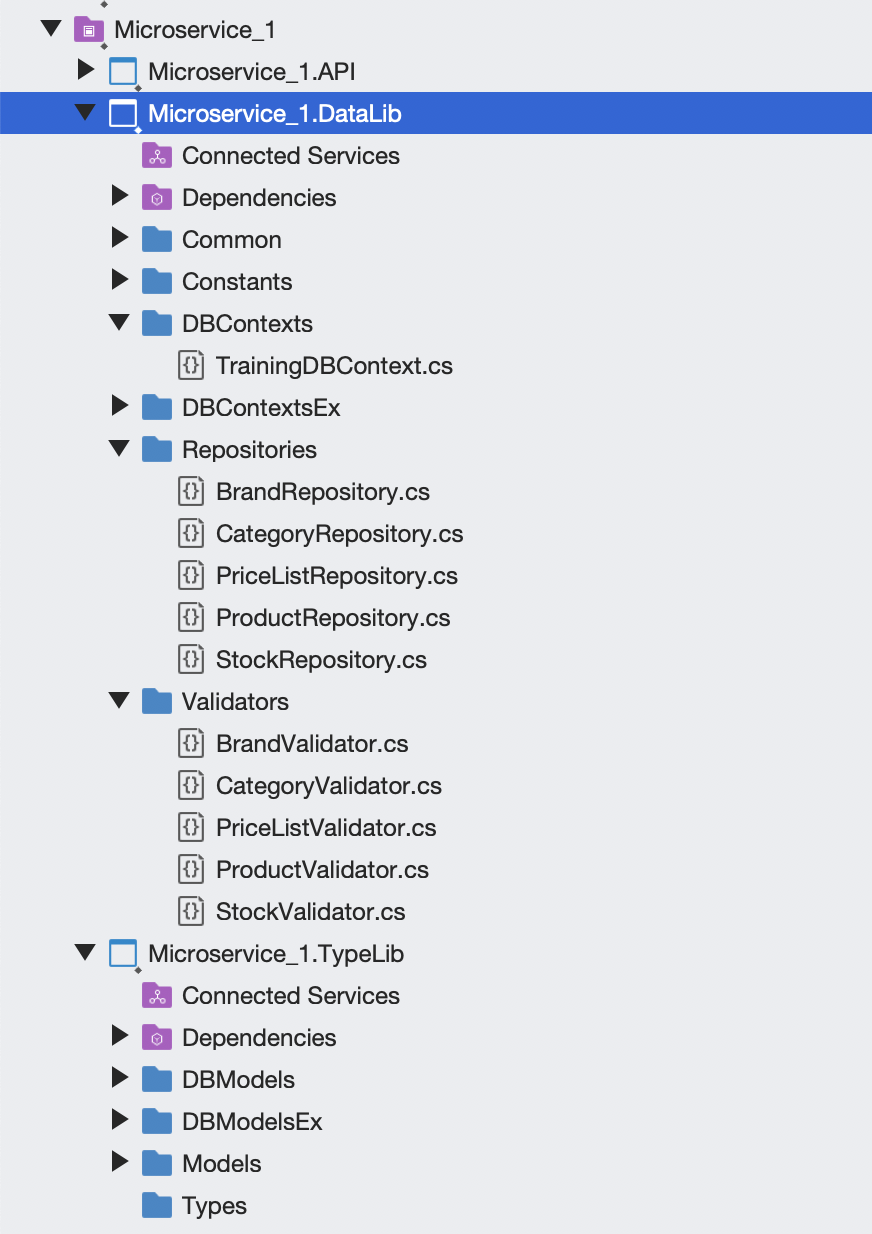 |
BFF (Backend For Frontend) project is the orchestrator which should coordinate all subsequent calls, help organize microservice architectures and coordinate functionality across a diverse, wide system.
To run your microservices on Docker instances, check DevOps & Dockerization